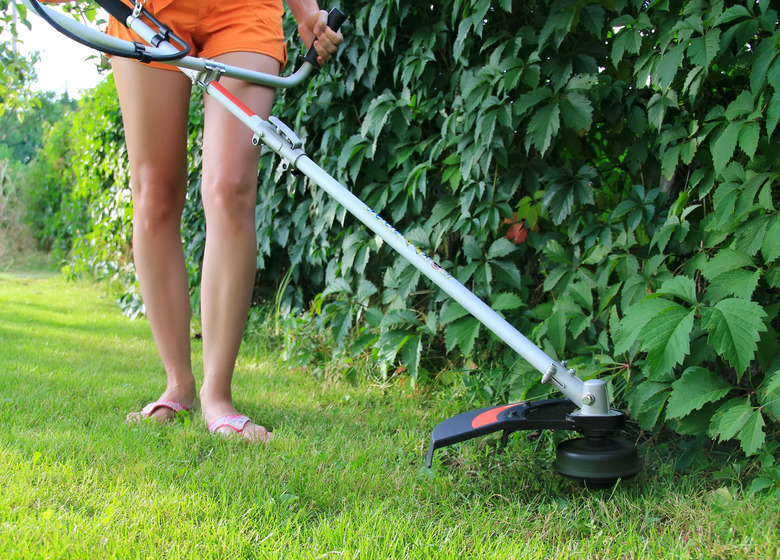Stihl String Trimmer Has No Spark
We may receive a commission on purchases made from links.
Finding time to do all the outside work needed to keep your property looking good can be a bit difficult. When you finally get to it, it can be frustrating to finish mowing the lawn only to find out that you're going to have to leave weeds standing because your Stihl string trimmer won't spark.
The ignition systems on Stihl brand string trimmers operate with a breakerless magneto ignition system. These ignition systems house an electric coil, which builds, stores and fires off the high voltage charge. This charge travels to the spark plug where it ignites the fuel. If this process is off anywhere in the ignition system, the trimmer will have no spark. But if you're a bit handy, you may be able to get things going without much trouble.
Check the Spark Plug
Check the Spark Plug
When operating on the ignition system of a Stihl brand string trimmer, you'll need to take special precautions since the voltage involved can be lethal. Wear leather work gloves and always set the trimmer on the ground or on something that's directly touching the ground. Move the ignition switch into the "Off" position and unhook the rubber boot from the tip of the spark plug. Unscrew the spark plug with a socket wrench and inspect the metal tip. If the tip looks black, bent or broken in any way, replace the spark plug.
Test for Spark
Test for Spark
Refit the spark plug back into the rubber boot with the metal tip pointing out. With the trimmer on the ground, brace your knee onto the shaft or get a friend to help hold the trimmer steady for you. Switch the ignition back to the "On" setting and hold the ignition wire just below the rubber boot. Be sure you're wearing work gloves when you do this. Position the tip of the plug just over an inch away from a metal point on the engine block that is touching the ground. Pull sharply on the starter rope and check for a spark.
Check the Wiring
Check the Wiring
If there's no spark during the test, check all of the ignition system wires for damage or loose connections. Check the inside of the rubber boot to make sure that there's no dust or other debris interfering with the connection. Make sure the rubber boot isn't loose or hanging off the HT lead wire. Check the short-circuit wire and lead wire running from the ignition module to the starter switch. Make sure these wires aren't pinched or touching any metal on the engine block, such as the crankcase. Replace any damaged or broken wires.
Replacing the Ignition Module
Replacing the Ignition Module
After you replace any damaged wires, repeat the test for spark. If there's still no spark present, the flywheel and the ignition module will need servicing. The flywheel needs to spin evenly and at a speed high enough to generate the proper charge. Check the magnets on the end of the flywheel to make sure they aren't discolored, and check the flywheel to make sure it spins evenly on the crankshaft. If there's still no spark, you'll need to replace the ignition module.
